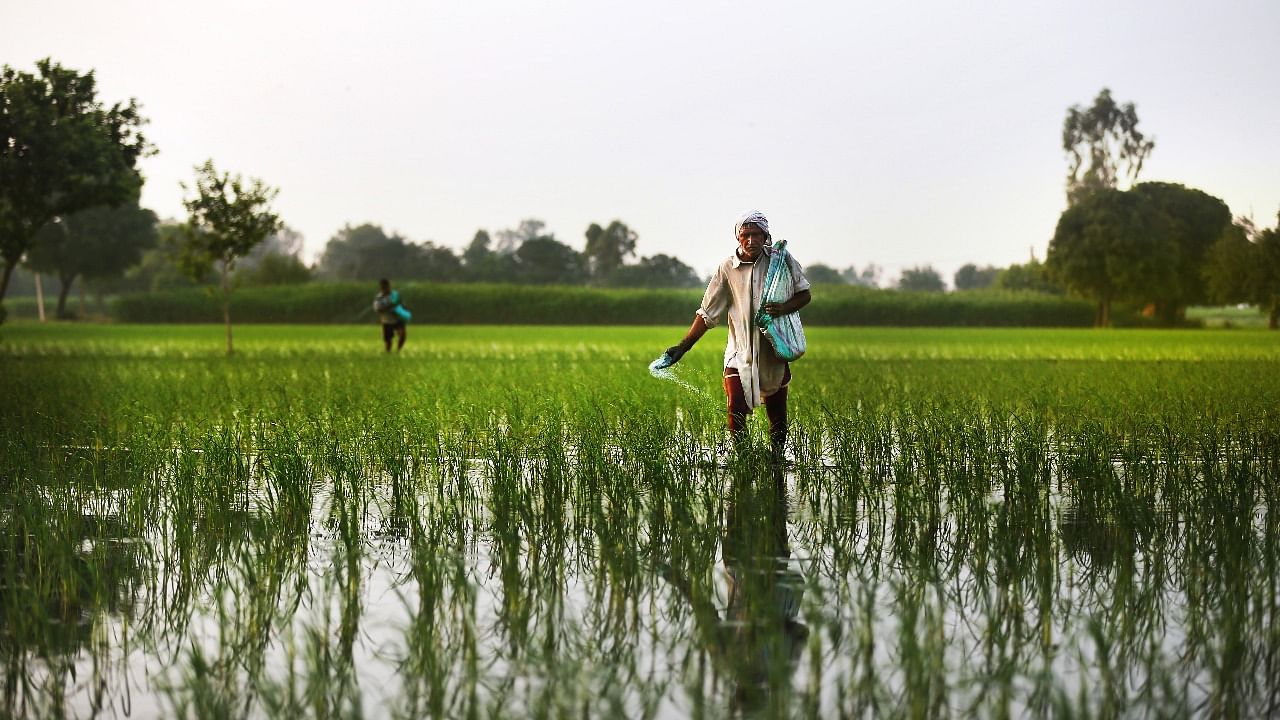
Land is the most important means of production for households engaged in agriculture. Access to land remains vital in India as agriculture continues to be a major source of livelihood for a large section of its population. According to the Periodic Labour Force Survey (PLFS) data brought out by the National Statistical Office (NSO), 58% of our rural workforce was engaged in agriculture in 2018-19. The ownership of land also facilitates access to formal-sector credit and other productive assets; determines the investment and risk-taking capacity of households, and shapes the overall balance of power in the rural economy.
Along with increasing the asset base and earnings from cultivation, which directly contribute to the accumulating potential of a household, ownership of land also has wider implications for the accumulation process through prospective commercial use for non-agrarian accumulation.
From the time of settled agriculture, access to land has been the fulcrum of social relations. Historically, in India, different social groups had varied access to land. While the groups now identified as Scheduled Castes (SC) were generally landless, those now identified as Scheduled Tribes (ST) occupied the less fertile land, and the present-day Other Backward Classes (OBC) were largely the peasant cultivators and artisans without land rights. In the period after independence there was reconfiguration of land rights through estate abolition acts and land redistribution acts. It serves as a useful exercise to examine the access to land across social groups at a time when India is celebrating 75 years of independence.
The NSO released its latest report on Land and Livestock Holdings of Households and Situation Assessment of Agricultural Households Survey in September 2021. The survey was conducted from January to December 2019, as part of the 77th round, which collected information for the period July 2018-June 2019. This is a large-scale sample survey that provides socio-economic information on both agricultural and non-agricultural households.
Agricultural households were defined as ‘a household receiving value of produce more than Rs 4000 from agriculture activities (for example, cultivation of field crops, horticultural crops, fodder crops, plantation, animal husbandry, poultry, fishery, piggery, bee-keeping, vermiculture, and sericulture) and having at least one member self-employed in agriculture either in principal status or in subsidiary status during the last 365 days. The survey excluded the households that were entirely dependent on agricultural labour or on income from coastal fishing, rural artisanry and agricultural services. It is of relevance to note that using an income cut-off (Rs 4000 from agricultural activities) to identify agricultural households can possibly result in exclusion of producers with very low agricultural incomes owing to extremely small land holdings or crop failures.
The NSO data shows skewed distribution of land ownership across social groups, with socially dominant groups having greater access to land. According to the report, OBC households made up 46% of total agricultural households and SC and ST households accounted for 16 and 14% respectively of the total agricultural households. Households belonging to privileged castes that have been categorised as ‘Others’ formed almost 24% of the total agricultural households.
The data reveals large disparities in access to land across social groups. SC households own merely 9.5% of total land, a much smaller share in comparison to their share in population. OBC households and those belonging to ‘Other’ castes have a higher access to land in comparison to their share in population, 48 and 29% respectively. Moreover, unequal access to land across social groups would have been further amplified, if agricultural labour households were included in the survey, as they often belong to socially marginalised sections and earn low agricultural incomes.
Nevertheless, average land ownership also varies greatly across social groups. Average land holding for SC households (0.52 hectares) was half the average ownership by ‘Other’ households (1.05 hectares). A glance at the distribution of land across social groups shows that around half of SC households had land holdings less than 0.4 hectares, as against 33% of ‘Other’ households who owned such small holdings. Only 6% SC agricultural households owned more than 2 hectares of land. For ST agricultural households, this proportion was 10%, for OBCs it was 12%, while for ‘Other’ households it came up to 16%.
Unequal access to land also got translated into variation in income from cultivation across social groups. During 2018-19, an average SC household earned about one-third of the average monthly income from cultivation earned by an average ‘Other’ household whereas an ST household earned around half of average crop income earned by an ‘Other’ category household. Average monthly income from cultivation of an OBC household was two-thirds that of the average income earned by households belonging to the general category. Lower remuneration from crops by ST households also points to the importance of quality of land and other means of production as they owned 14 per cent of total land which was similar to their share in total agricultural households, but their income was much lower than their counterparts belonging to ‘Other’ category.
On the whole, the report provides important insights on access to land across social groups and differences in agricultural incomes. Caste continues to play an important role in shaping economic outcomes for rural agrarian households. The SC households own the lowest proportion of land and earn the lowest average income from agriculture. While STs and OBCs have larger land holdings on average, their income from cultivation remains much lower compared to the income of households of the Other category.
To sum up, the agrarian crisis, which can partly be viewed as a consequence of unequal access to means of production, will only deepen, if social identities are not foregrounded in our policy formulations.
(The writers are research scholars at the Centre for the Study of Regional Development, JNU)